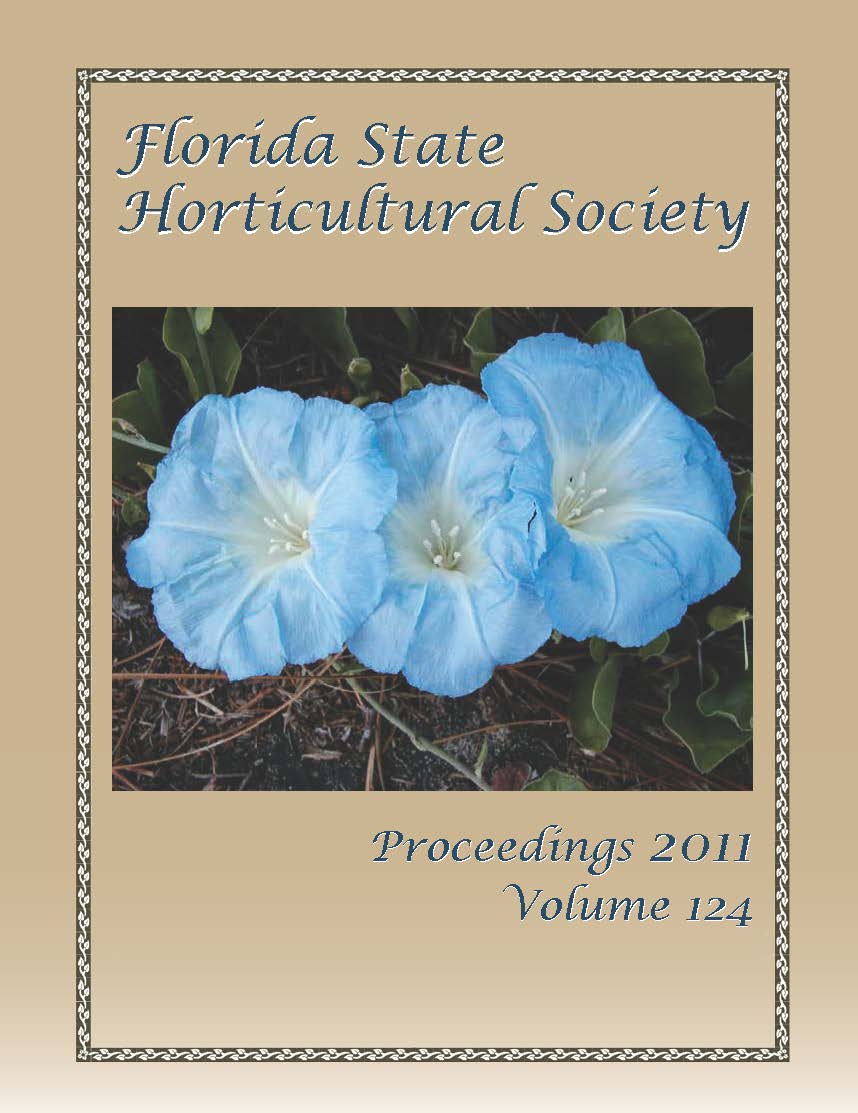Abstract
This study was conducted to determine if NAA thinning may be useful for managing cropload in Florida ‘W. Murcott’. Trials were conducted in two groves of ages 4 and 6 years. NAA was applied on 13 May 2010, when fruitlets averaged 10–12 mm in diameter. A randomized complete-block design was used, blocked by cropload and location. Airblast applications were made using non-ionic surfactant at 0.05%. Three spray variants were used: 250 ppm NAA, 2.4 kph, and 1170 L·ha–1; 500 ppm NAA, 2.4 kph, and 1170 L·ha–1; and 500 ppm NAA, 4.8 kph, and 585 L·ha–1. Fruit were harvested on 7 Feb. 2011 and data were collected on number of boxes per tree, number of fruit per tree, and limb breakage. Prior to harvest, a random 20 fruit per tree sample was collected to determine fruit size distribution. In the 4-year-old trees, non-thinned fruit averaged 158 g/fruit and peaked on 80 to 100 carton size, while in the 6-year-old trees non-thinned fruit averaged 127 g/fruit and peaked on 100 to 120 carton sizes. Mean fruit weight was significantly increased by each NAA treatment in both groves, ranging from 9% to 12% increase in the 4-year-old trees and 22% to 38% increase in the 6-year-old trees, substantially shifting fruit into larger carton sizes. Boxes per tree were not affected by NAA treatment in either grove. Economic analyses indicate that crop value was significantly increased by NAA treatments (by contrast analysis) in the older trees, but not the younger trees. Even though average fruit size was increased by NAA thinning in the 4-year-old trees, reduced number of cartons overall, by reduction in fruit volume of smaller but still valuable carton sizes, largely eliminated current season economic advantages of observed fruit size increases.

